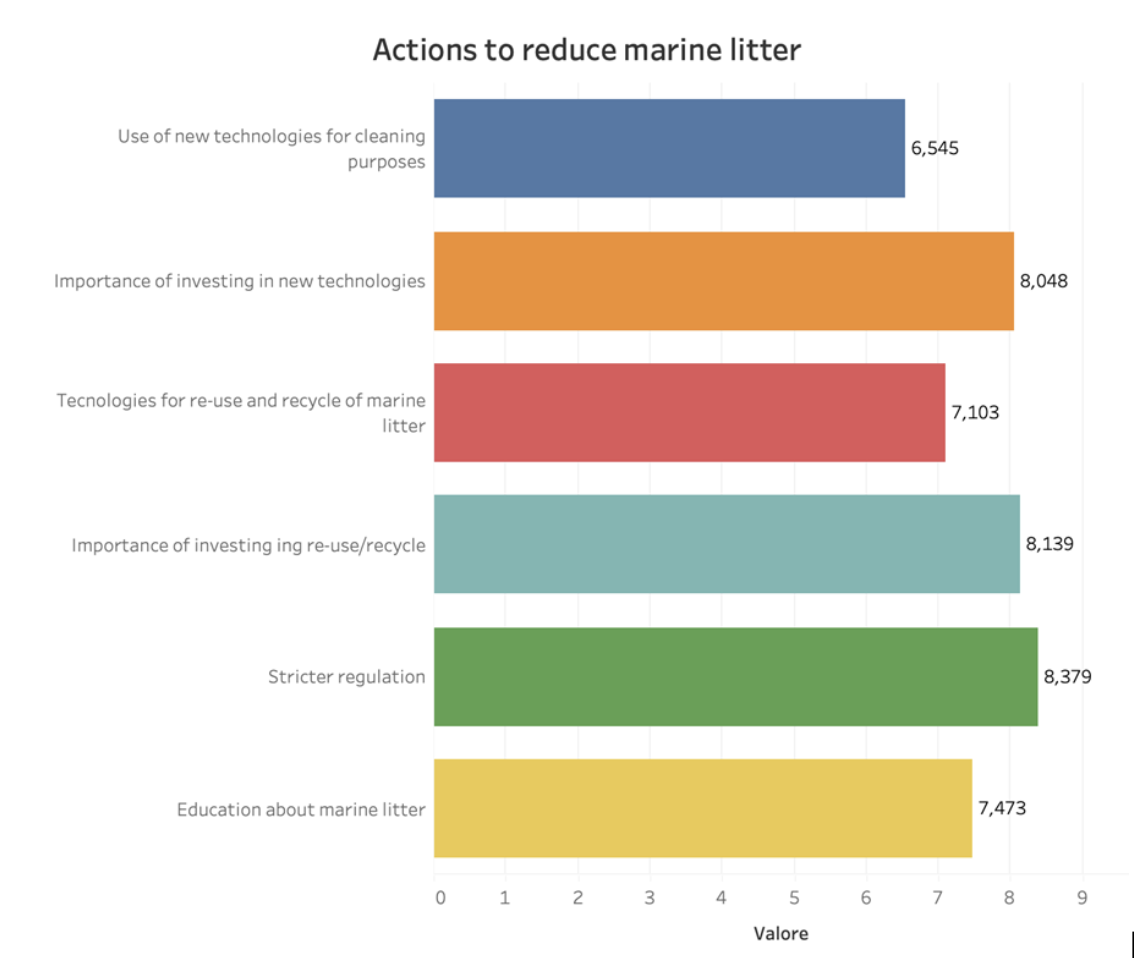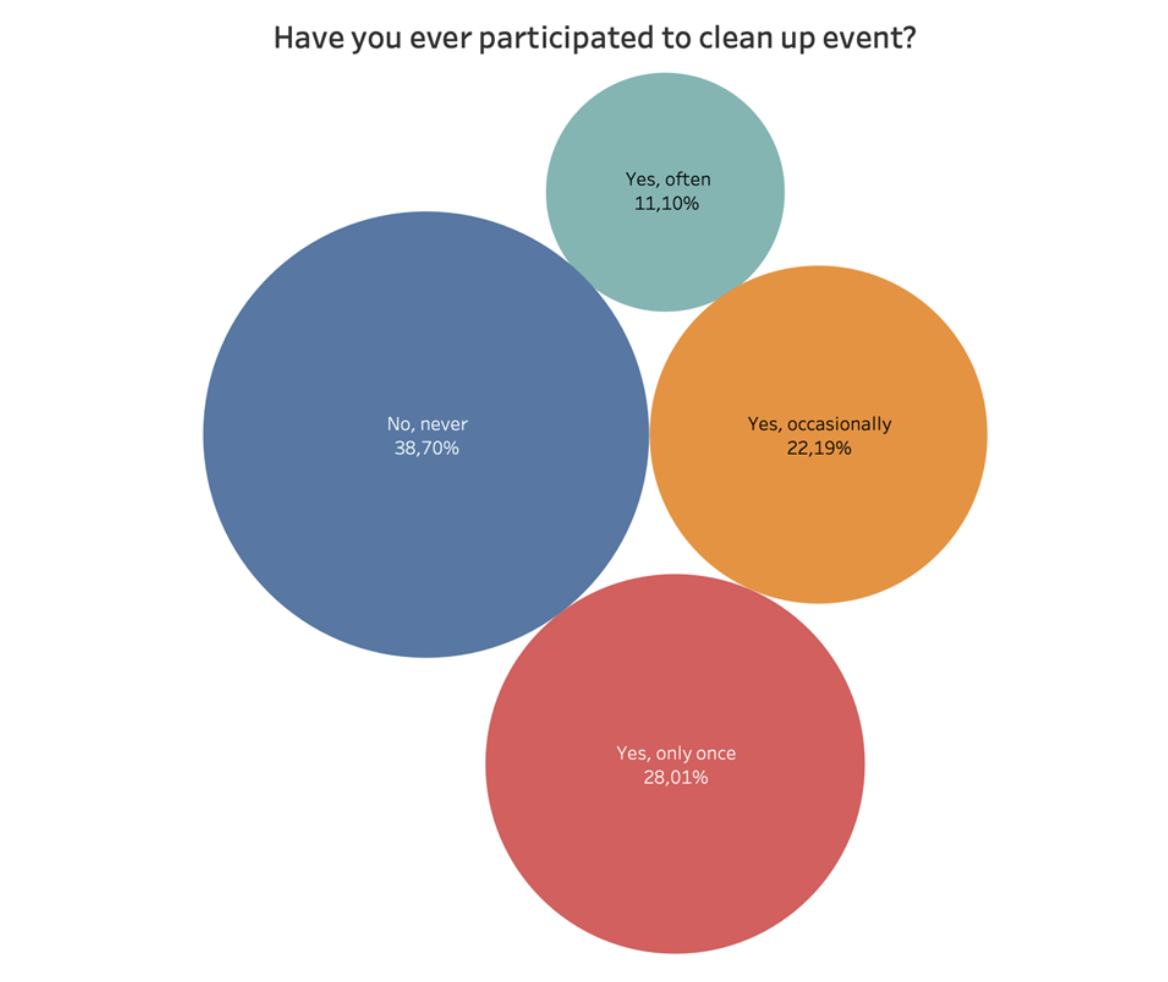The latest deliverable from the In No Plastic project explores society’s perception of plastic litter, addressing these pressing environmental challenges. By delving deep into the collective consciousness, this initiative seeks to unearth the primary areas of concern surrounding plastic pollution, unravelling its intricate web of sources and proposing viable solutions as perceived by the population.
A diverse array of surveys and tools have been meticulously crafted for effective analysis to ensure a comprehensive understanding of society’s stance on plastic pollution. Three separate surveys were distributed, engaging a total of 2,285 participants. Specifically, the collected samples encompass: 2,181 responses from the Global Community; 78 responses obtained from clean-up activities organised by InNoPlastic partners, and 26 responses from general stakeholders.
Visibility and Sources of Plastic Litter
The survey revealed that more than half of the respondents noticed plastic litter along rivers or coastlines, underscoring the widespread visibility of the problem. Coastal tourism and inland river pollution were identified as the primary sources of plastic waste, with local geographical features playing a significant role in determining the extent of pollution. For instance, regions with numerous rivers flowing into seas or oceans, such as Italy with the Adriatic Sea, faced higher levels of plastic pollution compared to areas with fewer river inflows, like Croatia.
Perceived Impact of Marine Plastic Pollution:
Over 95% of participants regarded microplastics as more hazardous and polluting than macroplastics, aligning with scientific research on the detrimental effects of microplastic contamination. The survey highlighted marine life and human health as the most affected by plastic pollution. Engagement in workshops and cleanup events also emerged as crucial avenues for raising awareness and fostering a deeper understanding of the issue among the public.
Solutions
The survey respondents identified collective behavioural change, local waste management improvements, and stricter regulations as the most effective solutions to combat marine plastic litter pollution. While acknowledging the European Union’s commitment to addressing the issue, respondents expressed scepticism about the commitment of local or national authorities, indicating a perceived gap in governmental efforts at various levels.

Awareness and Openness to Technology
While behavioural and regulatory approaches were deemed more effective in tackling plastic pollution, there was optimism about the potential of technological advancements in the future. Respondents recognized the role of innovation and continuous research in developing technologies to address marine plastic litter pollution. However, technological solutions were perceived as less immediate or impactful than behavioural changes and regulatory measures.
Implications and Future Directions
The insights gleaned from this survey underscore the importance of multi-faceted approaches in addressing marine plastic pollution. Efforts should prioritise collective action, including behavioural changes, enhanced waste management infrastructure, and stringent regulations. Furthermore, there is a need for greater collaboration between governments, non-governmental organizations, and research institutions to drive innovation and develop effective technological solutions.
The survey highlights the urgency of addressing marine plastic pollution and the need for comprehensive strategies that leverage behavioural, regulatory, and technological interventions. By understanding public perceptions and preferences, policymakers and environmental stakeholders can formulate targeted initiatives to safeguard marine ecosystems and protect human health from the pervasive threat of plastic pollution.
